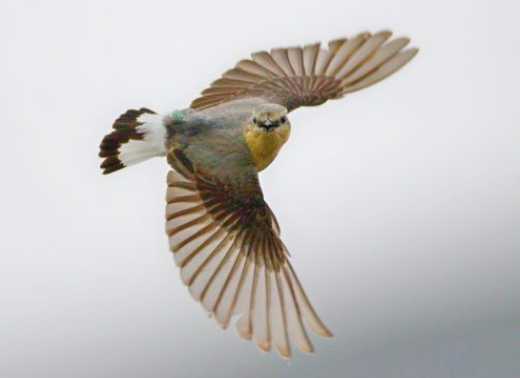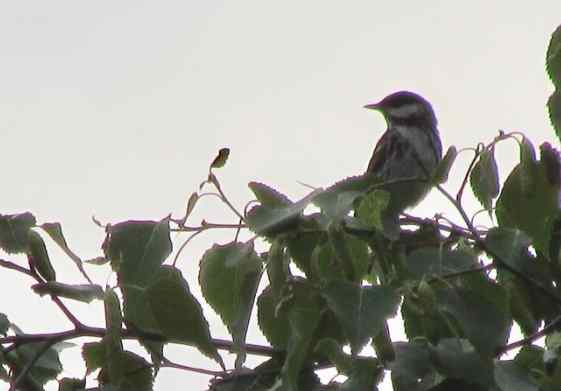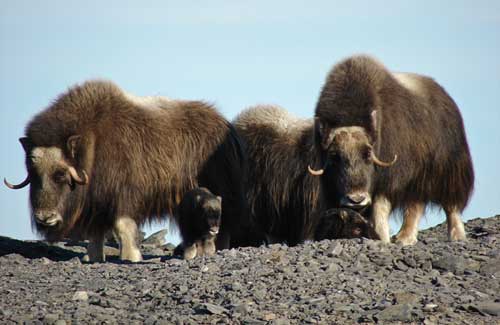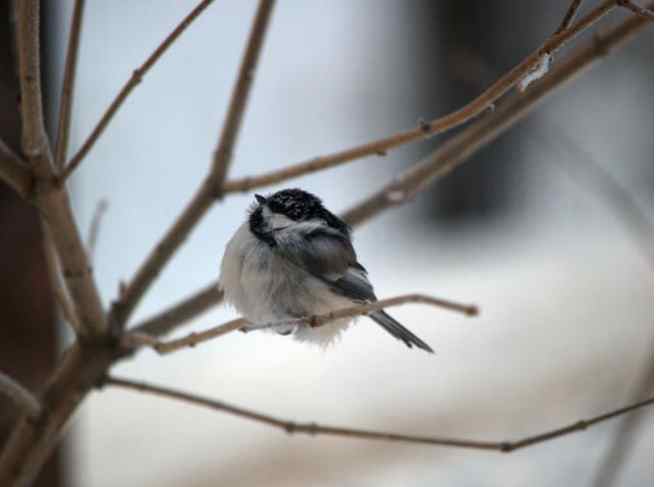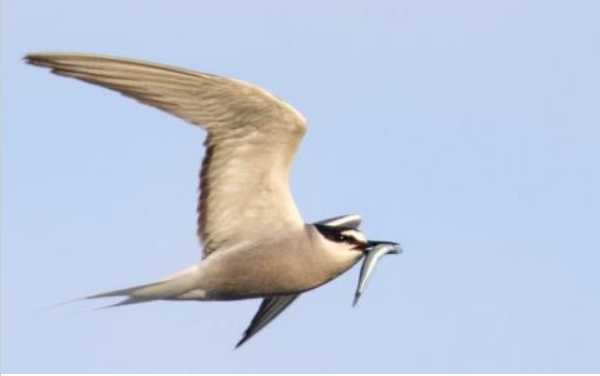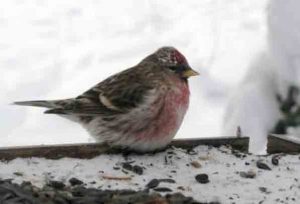
Biologist Susan Sharbaugh, formerly of the Alaska Bird Observatory, once spoke about the strategies birds employ to survive in our season of darkness and cold. She talked about the flighty birds that split, and the hardy few that stay. I thought I knew something about birds, but she kept delivering facts that were new to me. Among them:
Arctic terns, those of the 25,000-mile annual migration from Antarctica to the Arctic and back, can live 35 years.
Northern wheatears spend their summers with muskoxen and their winters with zebras.
Blackpoll warblers fly from eastern Canada to South America without stopping.
One of the many tools birds use to migrate — besides the metal bits in their heads that help them sense Earth’s magnetism — is their ability to use infrasound. Infrasound consists of frequencies too low for us to hear. The aurora, volcanoes, underground nuclear detonations, and stormy seas emit infrasound waves. “Birds flying over the Rockies can hear the surf of both the Atlantic and Pacific,” Sharbaugh said.
Sunlight can penetrate birds’ skulls and help calibrate their internal clocks.[xyz-ihs snippet=”adsense-body-ad”]Migrating birds are born with an internal compass and a direction in which they have an urge to fly. “That arctic warbler nestling is going to fly from Tangle Lakes to the Philippines by itself.”
Alaska blackcap chickadees are larger than the same species in the Lower 48. “We have Boone and Crockett chickadees,” Sharbaugh said. “Chickadees here are about 12 grams; in Seattle they’re 8 grams.”
Alaska chickadees have more feathers than Lower 48 chickadees.
Unlike chickadees farther south, Alaska chickadees have a more elaborate feather structure, with “extra little hooks that grasp together and hold more air.”
Chickadees need the caloric equivalent of about three peanuts to make it through a long winter night, during which they will shiver off the extra weight they gained during the day.
Unlike chickadees, redpolls store birch and alder seeds and feeder seeds or sunflower chips in two pouches on their back, and digest them all night. “They have a lunch pail on their shoulders.”
Ptarmigan in winter eat woody twigs, just like moose, and digest the buds with the help of microbes in their gut. “The microbes get the meal, the bird gets a meal, everybody’s happy.”
Male snow buntings are the first to appear each spring, heading north to compete for limited nesting spots in rock crevices. The females arrive later, when it’s lighter and warmer.
Bohemian waxwings and humans are two of the few creatures that have a certain enzyme in their livers to metabolize alcohol. Waxwings need it for digesting fermented berries from ornamental trees, a major food source in winter.
If white spruce cones and seeds are plentiful, a mother white-winged crossbill might decide to have chicks in midwinter, and will sit on eggs within an insulated nest at 30 below in February. Fathers feed them so they don’t have to get up. “With enough food, anything’s possible.”
Source: UAF
[xyz-ihs snippet=”Adsense-responsive”]

